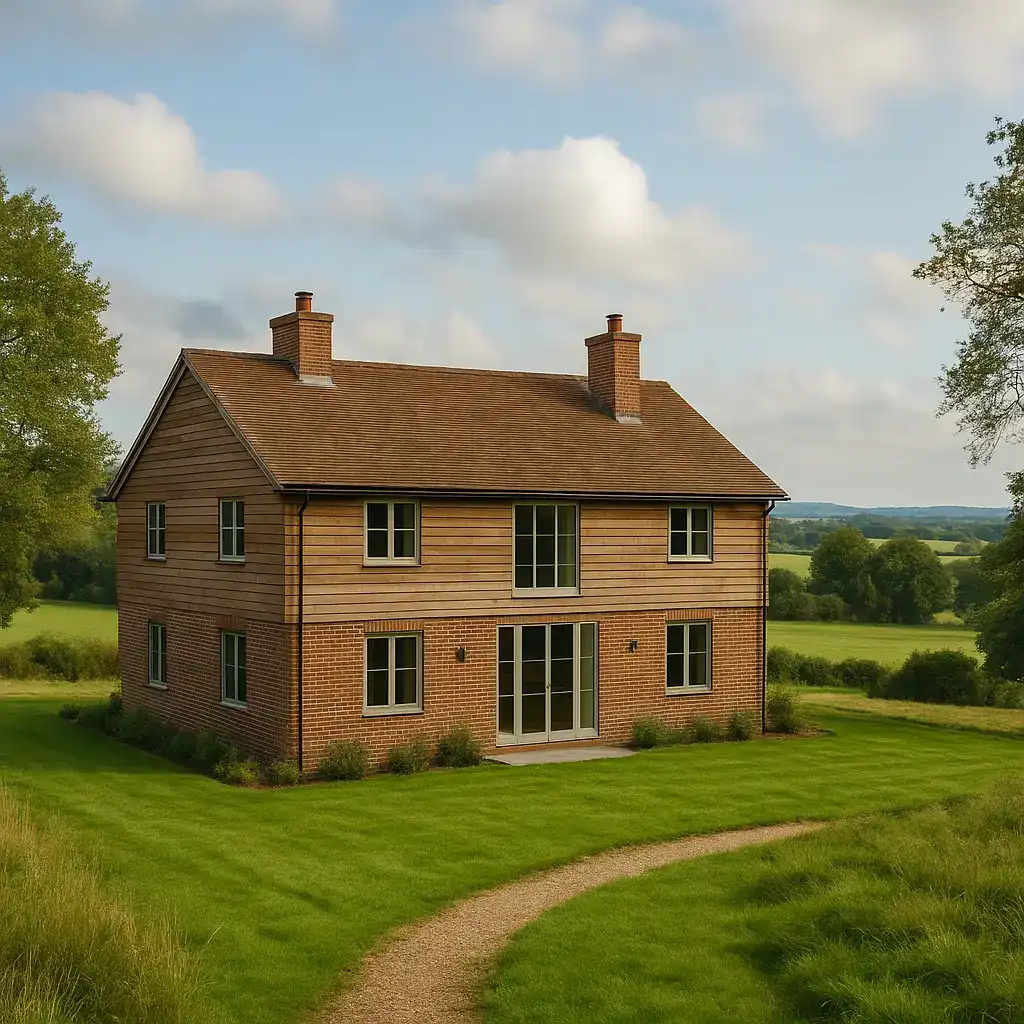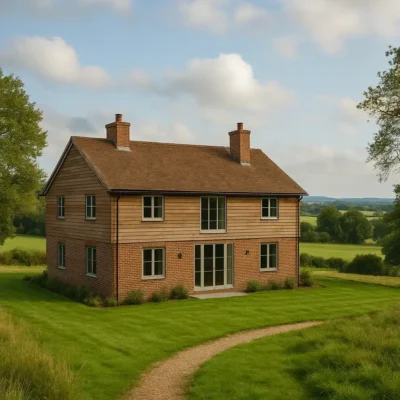What makes a country house feel contemporary advice, British rural home building, UK countryside property guide
What Makes a Country House Feel Contemporary?
24 May 2025
Country houses are expected to feel timeless, but they must also serve the needs of modern living. A contemporary country house doesn’t need to look modern—it needs to work with clarity, respond to its setting, and support the way people live today. That requires rethinking the building from the ground up: not just how it looks, but how it performs, flows, and feels to inhabit.
In Hampshire and across the South of England, these ideas are regularly tested. Sensitive rural locations, long views, conservation areas and local vernaculars all influence what can be built. But they also set the stage for homes that feel calm, confident, and deliberately untrendy.
Spatial Planning That Supports Daily Life
Contemporary planning removes hierarchy in favour of flow. Rather than rooms arranged around formality, spaces are zoned around lived experience—where people start the day, where they pause, where they connect or retreat. This isn’t about open-plan as default. It’s about clarity: a plan that allows you to move naturally from one space to another without friction.
In the best cases, you get a central space that serves as a hub—often a kitchen-dining-living zone—but it’s supported by secondary spaces with their own roles: reading areas, boot rooms, work nooks, garden-facing window seats. These smaller moments offer relief and contrast. Circulation becomes purposeful, not wasted.
Material Selection That Ages Well
Timelessness has less to do with style and more to do with how materials behave over time. Multi-stock brick, lime mortar, natural clay tiles, oak—these are materials that age with grace. They develop character instead of decay. They don’t demand attention, but they reward it.
Contemporary homes often use these traditional materials in more stripped-back, confident ways. Rather than decorative layers, there’s a focus on proportion, rhythm and texture. This restraint gives the materials room to work—visually and thermally.
In Hampshire, this restraint is often not just aesthetic but strategic. Many experienced Hampshire architects working in conservation-sensitive areas rely on simple, well-performing materials that blend into the setting and satisfy planners, without compromising the contemporary ambition of the home.
Controlling the Environment Without Mechanical Systems
Well-designed country houses don’t rely on technology to maintain comfort. They use orientation, thermal mass, and natural ventilation to regulate temperature and light through orientation, material mass and airflow, a principle often used in passive solar building design.
Roof overhangs prevent overheating in summer and let low sun in during winter. Openings are placed for cross-ventilation. Dense materials absorb heat during the day and release it slowly at night. These moves are subtle, but together they allow the building to remain comfortable with minimal mechanical input.
Good passive design is about shaping the envelope and layout so that the house works with the climate rather than against it. Designing to reduce reliance on technology – it also lowers operational carbon output, aligning with wider goals outlined in the UK’s climate change policy.
Designing to the Site
A successful country house doesn’t force itself onto the landscape—it fits within it. Topography, long views, tree cover, and neighbouring buildings all guide the placement, orientation, and form of the house.
This goes beyond planning compliance. It’s about spatial comfort. A building that follows the contours of the land or steps back to frame a view feels more grounded. Simple moves—like limiting height on the approach side or wrapping external space around prevailing sun—can make a home feel instantly settled.
Case Study: A New Country House in Hampshire
Set within 12 acres of rolling Hampshire countryside, this replacement dwelling offers a clear example of quiet performance through design. The brief was to create a calm, long-term family home—one that could serve different generations over time without feeling oversized or showy.
The plan is generous but measured. Living spaces open to the garden, with routes that feel intuitive. There’s no grand staircase or central void. Just a sequence of spaces that unfold with ease.
The material palette is deliberately low-key: warm multi-stock brick, soft mortar, pale timber detailing. These choices link the house to its agricultural surroundings without mimicry. A green roof over part of the single-storey wing reduces the visible mass, helping the home drop into the land rather than perch on top of it.
Environmental design was a priority. Deep window reveals provide passive shading, and openings are positioned for airflow across the plan. The structure itself moderates internal temperature, reducing the need for constant system intervention. The result is a house that is light-filled, quiet, and naturally regulated—without announcing any of it.
A contemporary country house isn’t defined by materials or form alone. It’s defined by how effectively it uses both to serve its context—and the people who live in it. When design decisions are made carefully, the result is a home that performs quietly and lasts well, without ever needing to declare itself as modern.
Comments on this guide to What makes a country house feel contemporary? article are welcome.
+++
Sustainable Homes
Sustainable Home Design
Green sustainable housing: nature house
Bamboo flooring sustainable homes
+++
Home Design
Property Design Articles
Comments / photos for the What makes a country house feel contemporary advice page welcome.






